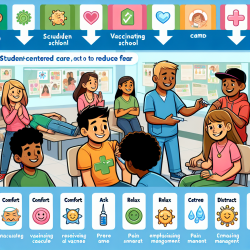Understanding Arginase 1 Deficiency: A New Frontier in Pediatric Therapy
Arginase 1 Deficiency (ARG1-D) is a rare urea cycle disorder that often goes unnoticed at birth, but its effects can be profound as children develop. Characterized by persistent hyperargininemia, this condition leads to developmental delays, intellectual disabilities, and spasticity, primarily affecting the lower limbs. As practitioners dedicated to enhancing children's outcomes, understanding the latest research on ARG1-D is crucial for implementing effective therapeutic strategies.
Key Findings from the Latest Research
The recent review article titled "The role and control of arginine levels in arginase 1 deficiency" by Diaz et al. provides a comprehensive discussion on the clinical and scientific literature surrounding ARG1-D. This research highlights the inadequacies of current treatment protocols that primarily focus on dietary protein restriction and ammonia diversion. While these methods reduce plasma arginine levels and improve cognitive and motor functions, they fall short of maintaining low arginine levels long-term, which is essential to prevent disease progression.
Data-Driven Insights for Practitioners
For speech-language pathologists and other practitioners working with children affected by ARG1-D, the implications of this research are significant. Here are some data-driven insights to consider:
- Early Diagnosis and Intervention: Early detection of ARG1-D can significantly alter the trajectory of the disease. Practitioners should advocate for comprehensive newborn screening and early intervention strategies to mitigate the condition's impact.
- Individualized Treatment Plans: Given the variability in clinical presentations, personalized treatment plans that go beyond dietary restrictions could be more effective. This might include exploring new pharmacological interventions that target arginine metabolism more precisely.
- Monitoring and Adjustments: Continuous monitoring of plasma arginine levels and adjusting therapeutic approaches accordingly can help manage the condition more effectively. This data-driven approach ensures that interventions are tailored to the child's evolving needs.
Encouraging Further Research
While the current research provides valuable insights, it also underscores the need for further investigation into more effective management strategies for ARG1-D. As practitioners, staying informed about ongoing research and emerging therapies is crucial. Engaging in collaborative research efforts can also contribute to a deeper understanding of the disorder and lead to innovative treatment solutions.
Conclusion
Arginase 1 Deficiency presents unique challenges in pediatric therapy, but by leveraging the latest research and data-driven approaches, practitioners can significantly improve outcomes for affected children. Emphasizing early diagnosis, personalized treatment plans, and continuous monitoring are key strategies that align with the findings of Diaz et al.
To read the original research paper, please follow this link: The role and control of arginine levels in arginase 1 deficiency.










